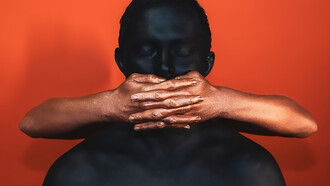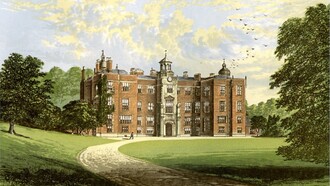Gabriele d'Annunzio, an atypical and essential writer of Italian literature, is celebrated thanks to the splendid French volume Gabriele d'Annunzio: Le poète architecte, in which the poet is analysed in the period he spent transforming the Vittoriale into his ‘book of living stones’, his last work left to posterity.
The unquestionable skills of the architect, decorator, and creator of unique living spaces are illustrated by the author Dario Matteoni, together with the extraordinary images by France de Griessen that excellently capture the symbols and allegories of d'Annunzio's inner movements.
As rightly emphasised in the book's presentation, the idea of the house as an autobiography finds full expression in the Vittoriale degli Italiani, and it is with this in mind that we give space to Professor Matteoni's words, to discover the genesis of a book, preciously enriched by rare documents.
I would start with the photographs, of absolutely extraordinary quality, created by France de Griessen. As you rightly noted, the beautiful photographs taken in the rooms and gardens of the Vittoriale degli Italiani by France develop an entirely new visual narrative and masterfully accompany the chapters of the book. France has been able to restore, with truly remarkable insight, the aesthetic imagery lavished by the poet in his last abode, excavating a universe dense with symbols of allegories and mysteries.
I feel I can say that the book was born out of the extraordinary meeting of two sensibilities: the first, France's, moves from a curiosity and intelligence attentive to grasping those particular atmospheres of light and shadow in the rooms of the Vittoriale, the redundancy of the objects distributed in these rooms, and the allegorical value of certain icons. For my part, my research is aimed at probing the interweaving between the literary space imagined by the poet from his first book, Il Piacere, and the real space of his residences, from the villa la Capponcina to the Vittoriale. Our work had three phases: in a first phase, France realised a photographic campaign in absolute autonomy, offering her visual interpretation of these places; in a second phase, we were able to link our reciprocal needs on a visual and textual level; and then France realised a second photographic campaign.
The third phase was marked by a very close confrontation over the sequence of images to be published in the book, both in relation to the unfolding of the text and the final album, which best represented France's great sensitivity as a photographer, also aimed at debunking the interpretation that the Vittoriale is the residence where d'Annunzio spent the last years of his life as a fallen prince, which is long outdated and without critical foundation. A multifaceted and irrepressible creativity, a strong intimate spirituality, and an inclination towards excessive self-celebration converge in the Vittoriale. The Vittoriale degli Italiani, the poet's last home, has assumed the status of a work of art to be studied and investigated on a par with the production of d'Annunzio as poet and writer. In many ways, the complex seems to offer preferential interpretations precisely because of its being the monumental synthesis of the self-celebration of the character.
In the residence at Cargnacco, the poet's intentions in the adaptation of the interior and the construction of the private gardens and park appear different from those that had animated the interventions of the Capponcina before and the villa at Arcachon during the period of French exile. Everything in the Capponcina must contribute to creating the myth of the character through the display of luxury and worldliness. In Gardone, the intention is to transfigure the character in history in reference to the multiple experiences of his life, from literature to the love dimension and finally the war. The multiplicity of these memories and the looming of these suggestions become in themselves superabundance, excess, a labyrinthine path of visions and symbols.
D'Annunzio, with mastery that is at all anticipatory of the communicative mechanisms ‘of the society of the spectacle', feeds the myth of himself. The overabundance in the rooms of the Priory does not only refer to objects but rather to the recall of memories triggered by the sight of single fragments. From the sight of an object, of a photograph, a stream of memories, of emotions, and of sensations springs forth. There is a process of identification by d'Annunzio with places and figures in a totalising dimension between the artist's consciousness and the images surfacing from memory. In this context, the plaster cast of Duse's head covered with a cloth, a ‘veiled witness’, takes on particular significance.
D'Annunzio built the monument celebrating his life at the Vittoriale, inventing a place steeped in mystery and symbolism in which he retraced the roots of his art and the exploits that accompanied it. The particularity of this last residence is that it is a monument, but it is also a place of life, a stimulus for new experiences, and a workshop for new productions.
In the Vittoriale, d'Annunzio carries out a process of self-analysis and does so by referring to two constituent elements of his personality: heroic mysticism and the sentiment of living. D'Annunzio invents a new living space that summarises in the sequence of spaces the memory of his entire literary experience, anchored in European decadence, from the contemplation of death to poetic creativity and sensual vitality. The buildings that are identified with the Holy Factory—that complex system of architecture and sacred places—correspond to the representation of heroic death, places pervaded with a primitive and mysterious sense of choral heroism. Memories follow one another and thicken into a nature bent by artifice in a combination of ‘abstract’ elements.
D'Annunzio transformed his dwellings according to his taste and according to his ideas, as if this arrangement were to last. Just as sudden were the changes: when the events of life suggested other places, whether the motivations were of a personal nature, connected to his poetic inspiration, or rather imposed by urgent financial matters, D'Annunzio would abandon that residence, abandoning everything he had conceived and built. With equal intensity, he recreated in other places and in other concrete conditions the same ideational mode, founded on similar spiritual solicitations and sustained by the recurrence of the same objects.
The authors
Dario Matteoni is an art historian and has been director of the Alma Artis Academy of Fine Arts in Pisa since 2016. He was associate professor of architectural history at the Faculty of Architecture of the Polytechnic University of Turin, editor-in-chief of the architecture history magazine Rassegna, founded by Vittorio Gregotti, and, together with Paolo Ceccarelli, he edited the Polis collection for Marsilio, before becoming director of the National Museums of Pisa from 2010 to 2015. He has collaborated with Italian and European museums to set up exhibitions on the themes of architecture and art.
France de Griessen is a multidisciplinary artist with a passion for creating and highlighting connections between different art forms. Through photography, writing or the stage, film soundtracks, records, watercolors, and books, she offers a poetic, symbolic, sensual, and cinematic vision of the world, imbued with mystery and romanticism. AAM Éditions has published her books ‘Fleurs de Paris’, ‘Un Art de vivre à Paris, inspirations poétiques’, ‘Coco de Paris', and ‘Chardon trouve sa maison’. She also contributed as a photographer and author to the collection ‘1900–1930 Art Nouveau Art Deco’.















